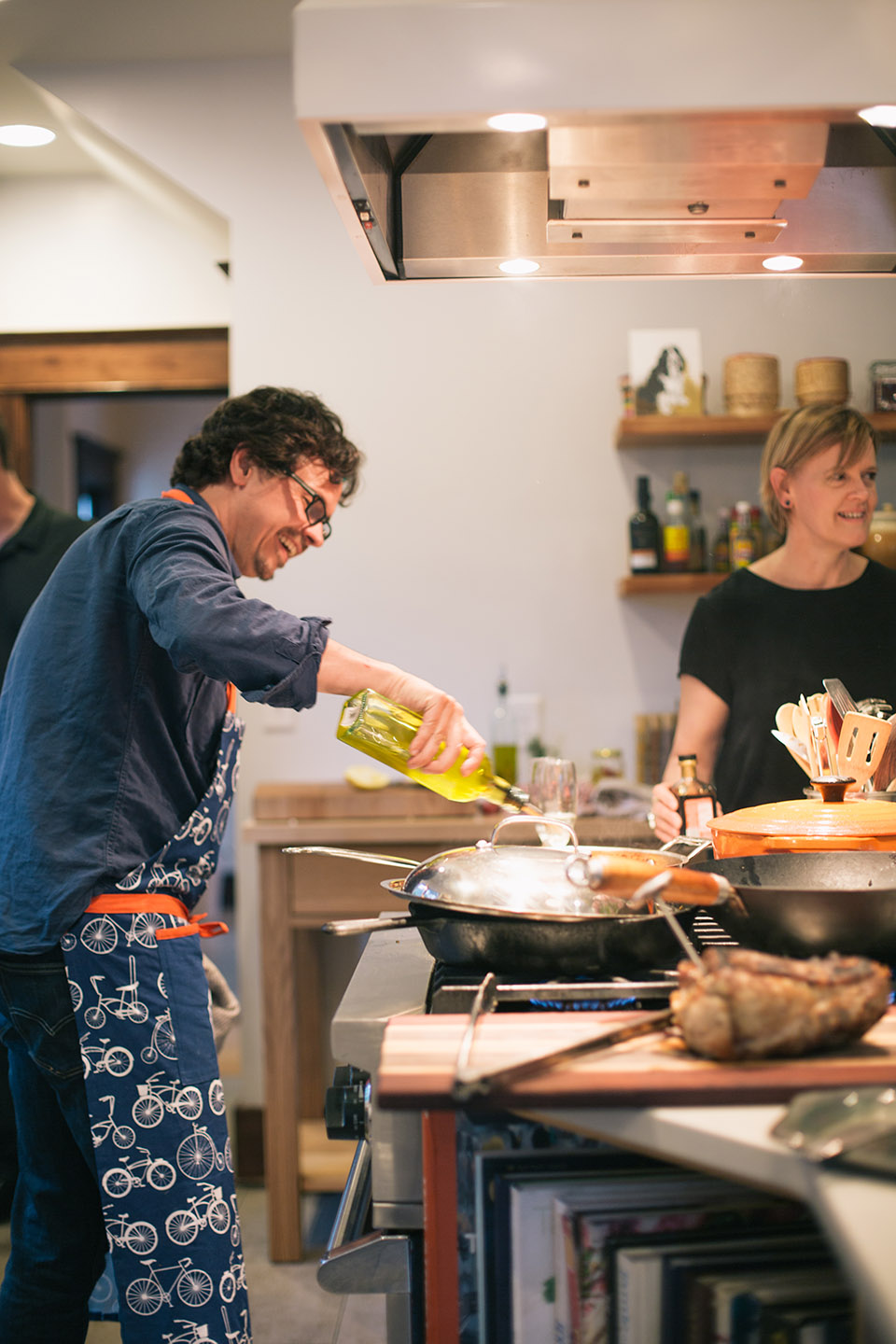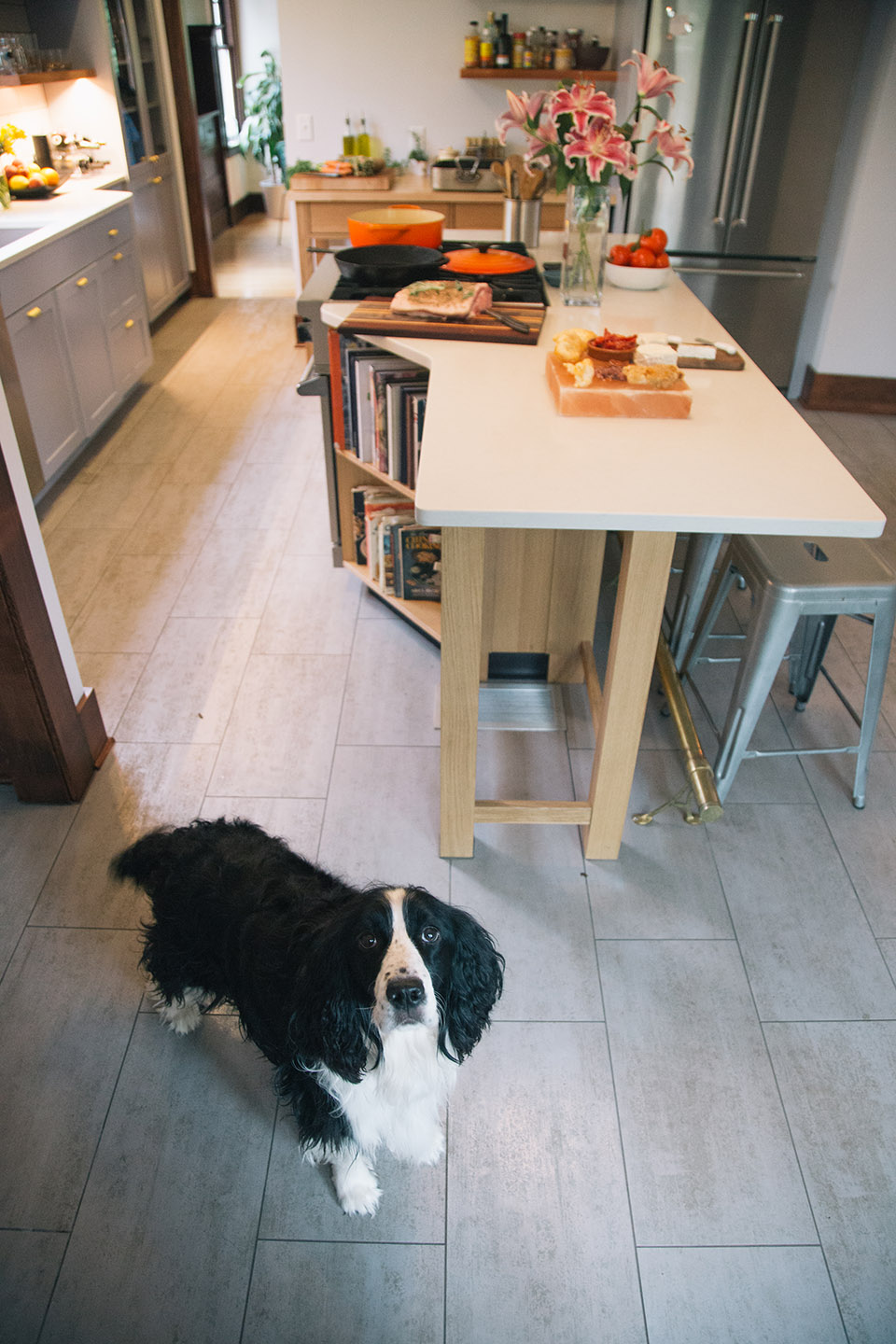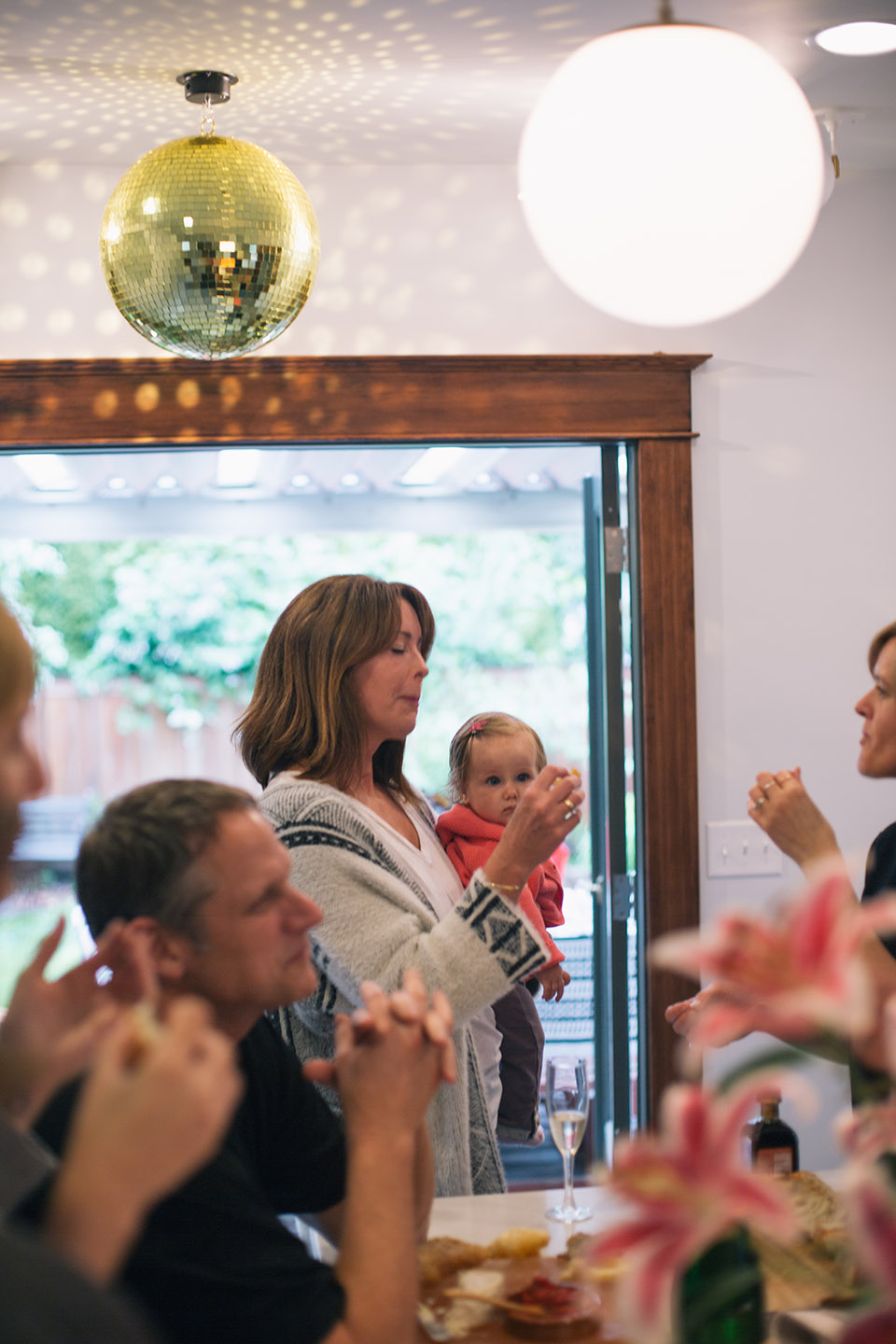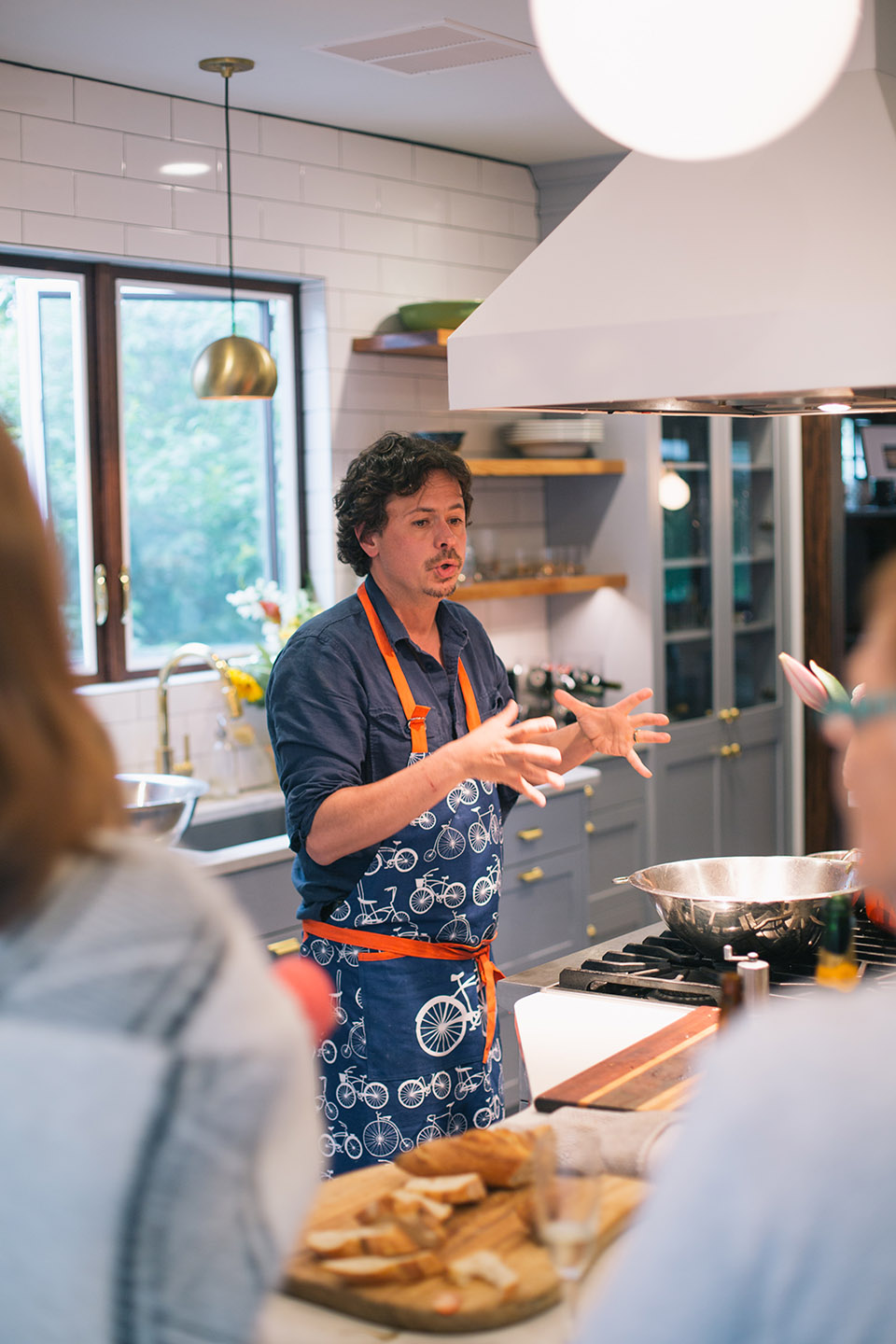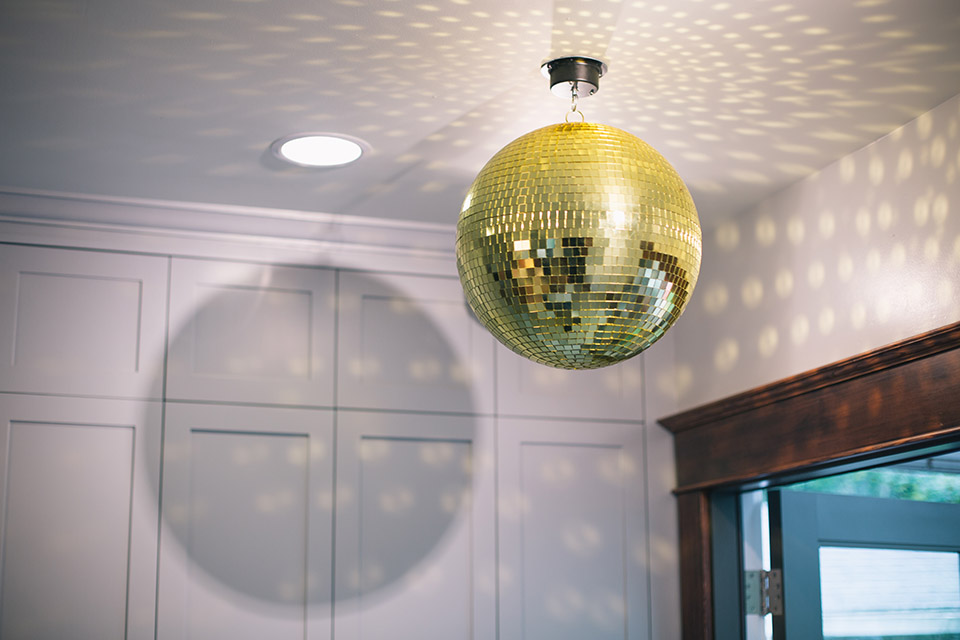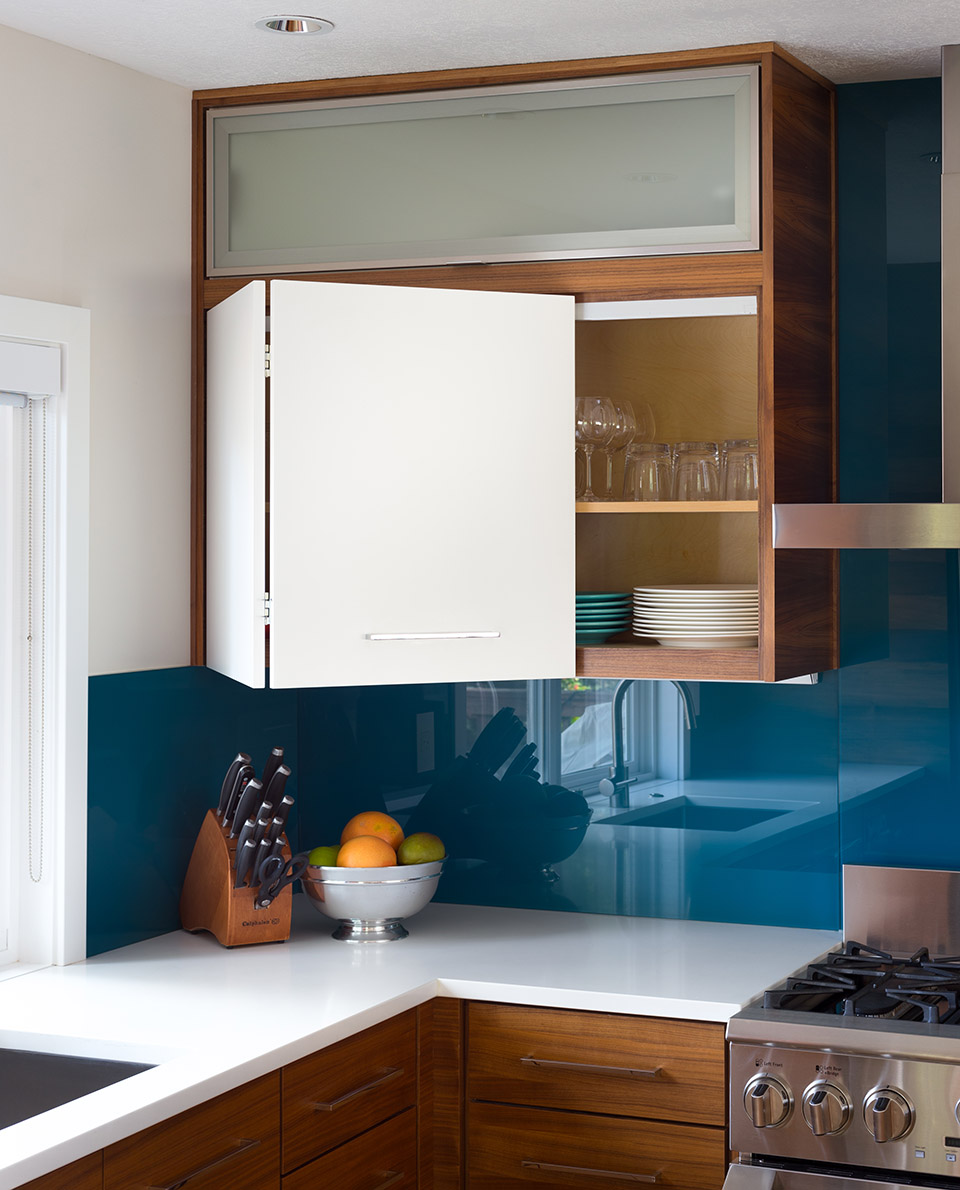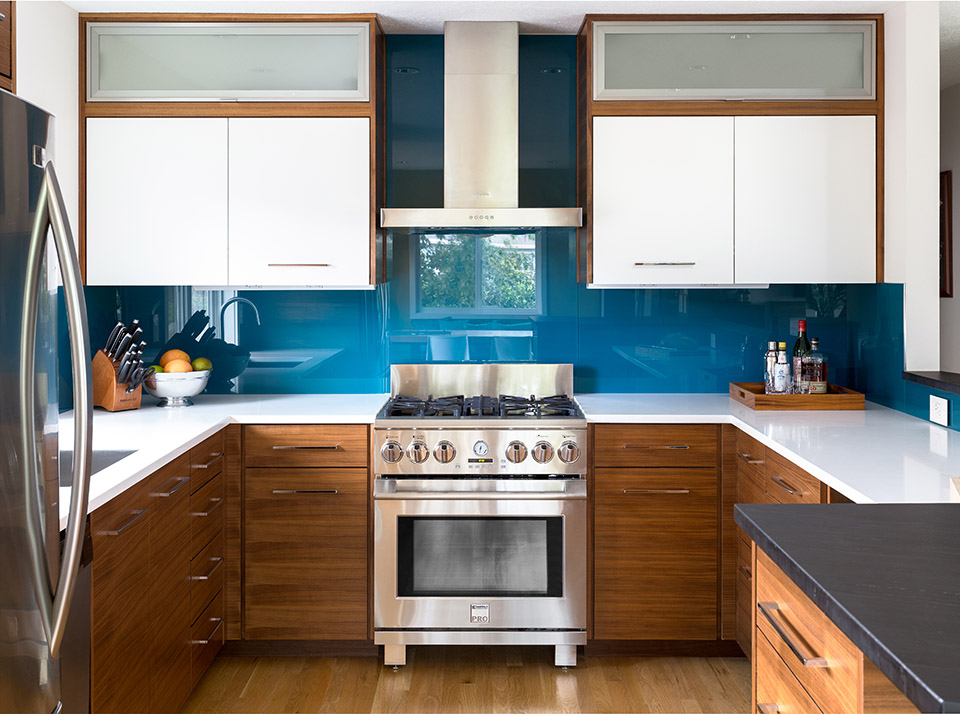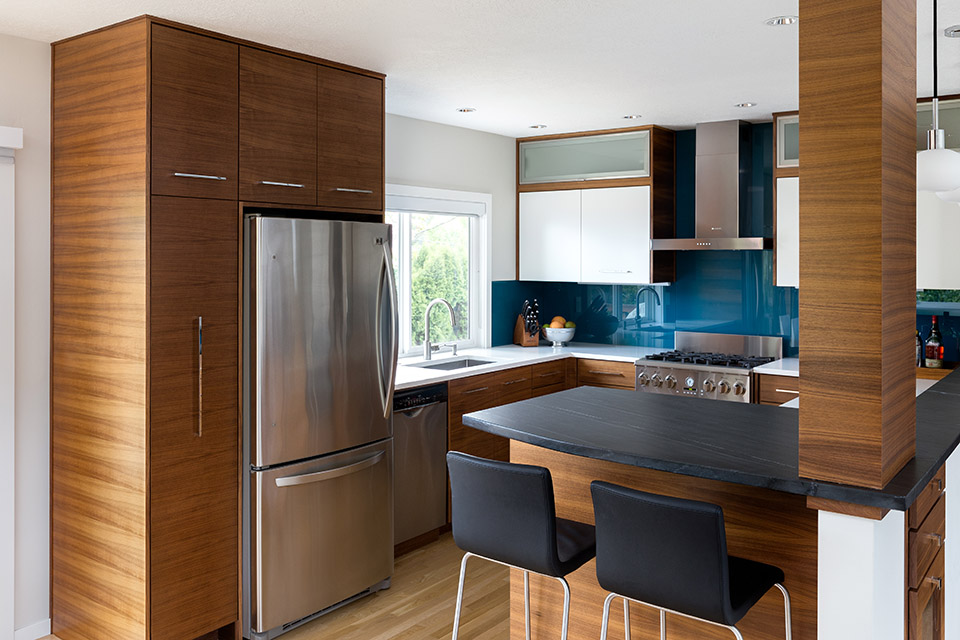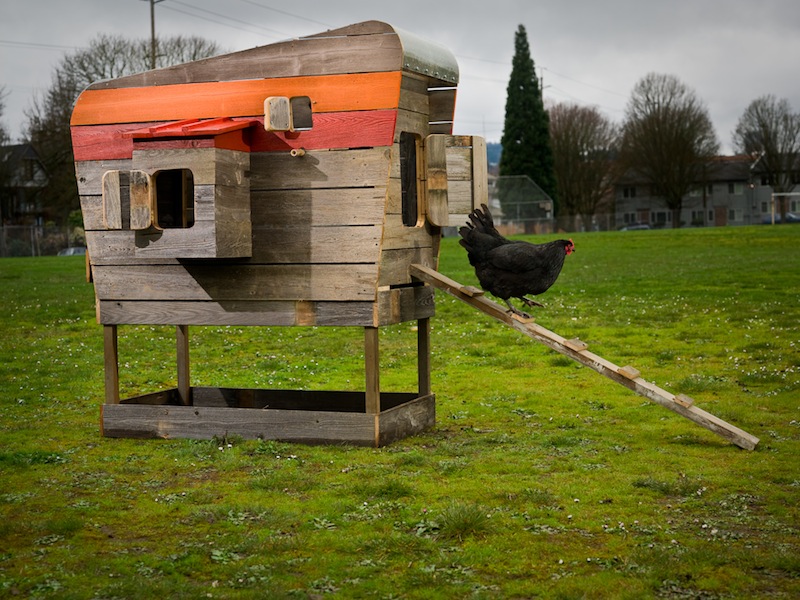Two homeowners personalize their kitchen remodels
written by Melissa Dalton | photos by Peter Schweitzer
Portland: Bring the Funk
It’s a common enough maxim that all parties end up in the kitchen. What’s not so common? To plan for it from the beginning of a remodel. In 2014, Julie Scott did just that. Scott shares her 1911 Craftsman home in Portland with husband, Greg Cittadini, and their children. When the couple met with designer Joel Fraley, Scott had an unusual request—to hardwire a disco ball from the kitchen ceiling. “I like glam, and I love to dance in the kitchen,” Scott explained. Fraley didn’t bat an eye. “They like to have fun and love music,” he said of the family. “It’s a perfect physical representation of their personalities.” He added the disco ball to the electrical plans and today, it’s just one example of how this thoughtful renovation was tailored to the couple and their home.
Their prior kitchen suffered from poor remodels that delivered neither form nor function. Orange-yellow veneered cabinets clashed with parquet floors. When opened, the dishwasher banged into the refrigerator, producing a bottleneck. “Nothing was efficient or built well,” Scott said. Additionally, a broom closet built around a pipe stack wasted valuable real estate and pinched the approach to the back door. Fraley’s redesign, executed by contractor Red Rooster Remodeling, tweaked the layout to optimize the existing footprint. The team recessed the pipe into the wall and installed floor-to-ceiling pantry cupboards, freeing access to the backyard. By centering the sink on the window and relocating the dishwasher, Fraley saved the work triangle from impediments.
Ultimately, the couple wanted a hardworking kitchen that wasn’t “too precious,” meaning surfaces would age well and tools could be stored close at hand. Cittadini did not want to rummage through cabinets during mid-meal prep. Scott sought to weave in the contemporary aesthetic she grew up with in Australia, but still respect the old Craftsman style. “We wanted the kitchen to feel like it belonged in the house,” Fraley said.
To that end, he specified new trimwork, window and doors to match the house’s historic vernacular, then opted for timeless and enduring materials that could also live a bit more modern. Oversized subway tile and porcelain floor tiles are durable and fresh. The brass faucet and hardware read as period appropriate and echo the disco ball’s bling. The contemporary natural finish on the white-oak island and worktable complements the classic painted shaker cabinets.
While the disco ball is a delight, the centerpiece of the room is Cittadini’s beloved Viking stove. He bought it years ago with an inheritance from his grandmother, who ran an Italian restaurant on Long Island. The stove is a testament to that relationship and the family’s passion for cooking. Nearby, built-in shelves hold her cookbooks, complete with handwritten notes. Whether he’s preparing his signature dishes there, the kids are doing homework at the island or weekend barbeques become dance parties beneath the disco ball’s spinning lights, the room has a gravitational pull on everyone. “We’re in here all the time,” Scott said. “We just love it in here.”
From Shabby to Chic, a Portland Designer’s Flair
Hannah Hacker knows kitchens. As an interior designer in the Portland area for twelve years and owner of Adapt Design, her kitchen designs now number in the triple digits. When she started pulling inspiration for her own remodel, there was one tried-and-true formula she avoided. “The white-on-white marble kitchen that everybody loves,” Hacker said. “Mostly that didn’t feel like it fit the style of the house or the style that I wanted the house to move in.” So in 2015, Hacker fashioned a more personal kitchen that eschewed trends in favor of harmonizing with her Mid-century home.
When Hacker and her husband bought their 1963 split-level in the Cedar Hills neighborhood of Beaverton in 2009, its charm stopped at the kitchen door. “It was a little box of a kitchen,” Hacker said. Two poorly placed doorways formed a circulation path through the center of the room and limited the work areas. Although the couple likes to entertain frequently, the cook was usually cut off from the festivities. To maximize the 100-square-foot room, Hacker eliminated a door and opened up the main wall. This connected the kitchen to the adjacent rooms, created sightlines to the front door and the surrounding yard, and doubled the counter and cabinet capacity. “We mostly used the existing space, just more efficiently,” she said.
Regarding finishes, Hacker wanted a palette that was a nod to the home’s Mid-century roots. Fortunately, this meant color and one of her favorite hues to boot: a bold teal. She discovered the specific shade in a book years ago and had it matched for the solid tempered glass backsplash. “I love the color. I’m always drawn to it,” she said. “It just fits my personality.” Not only does the bright glass make for a lively focal point, it’s proved easy to live with. It cleans up easily, and the reflective surface makes the kitchen live a bit larger. It gives the room a little more visual space with the reflection.”
The rest of the material selection complemented that initial choice. Walnut cabinets flatter the teal and provide warm contrast with light oak floors. In Mid-century fashion, the flat cabinet fronts and slim chrome hardware keep the overall look streamlined and unadorned. White did end up making a cameo appearance, with snowy upper cabinets wrapped in walnut and a glossy quartz counter, which brighten up the wood tones. Across the room, the dining area sports a saffron-colored wall that coordinates with the teal, while additional walnut storage unifies the overall space.
The best way to skirt trends is to personalize the design. Hacker did just this, not only via her jewel-toned backdrop, but with the custom-made dining table as well. “The wood is from a tree that was in the front yard of the house I grew up in,” she said. It was an ancient oak tree that had to be taken down. In the process, her parents had slabs made and gave one to her. “I just love that it has a story,” she said.


